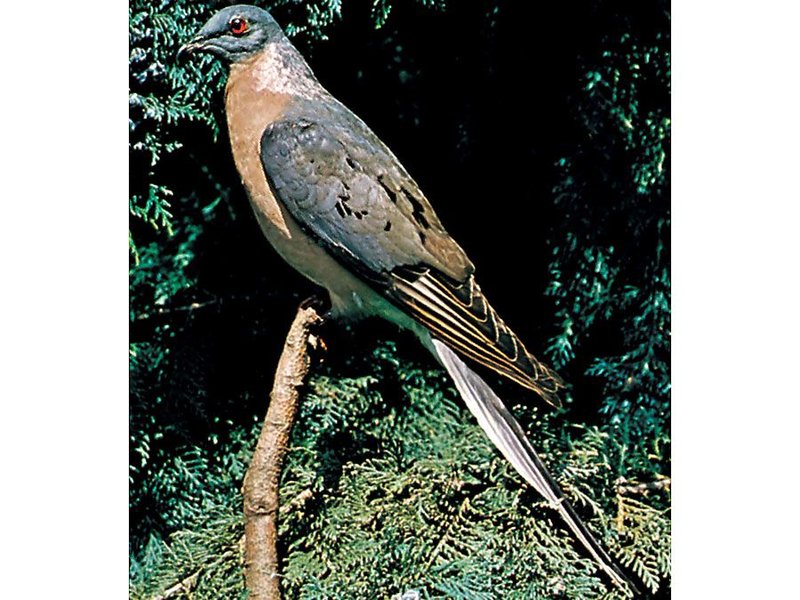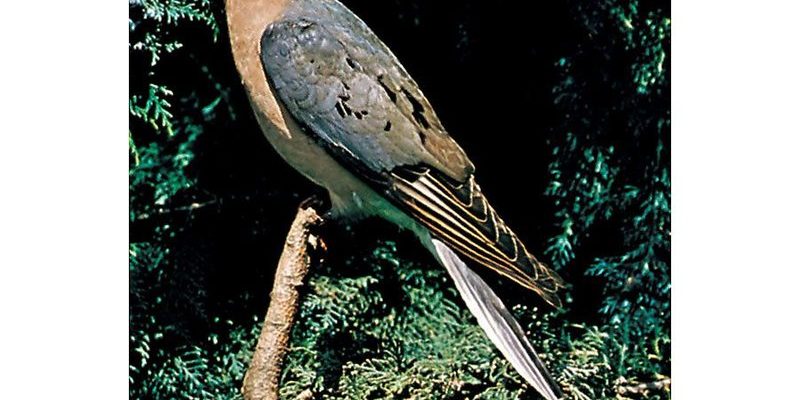
The Passenger Pigeon was not just any bird; it was like a gourmet eating machine in the wild. It thrived in North America, munching on everything from seeds to fruits. But how did it find its food amid towering trees and sprawling landscapes? In this article, we’ll dive deep into the food preferences of the Passenger Pigeon and explore its unique methods for hunting and foraging.
What Does the Passenger Pigeon Eat?
The Passenger Pigeon had quite the palate, feasting primarily on a variety of seeds, fruits, and nuts. You might think of a picky eater, but this bird was more like a culinary explorer. Its diet was versatile and depended on the seasons and available food sources.
Seeds were a staple of its diet, particularly those from trees like oaks, hickories, and other nut-bearing trees. In autumn, these trees would drop their acorns, which were like a feast for the pigeons. They would flock together, descending on the ground to snatch up these tasty morsels.
Fruits were also a favorite, especially berries. They would dive into bushes and shrubs, looking for the juiciest options. The Passenger Pigeon loved a good berry patch, particularly when wild cherries and blackberries were in season. It’s like a sweet buffet, with the birds indulging in nature’s candy.
How Does the Passenger Pigeon Forage?
Foraging for food was an art form for the Passenger Pigeon. They didn’t just stumble upon their meals; they had strategies that made them incredibly efficient foragers.
Let’s break it down. First, the Passenger Pigeon would survey the area from above. This bird had excellent eyesight, which allowed it to spot food sources from great distances. Imagine being able to see the tiniest acorn from high up in the air—that’s some serious talent!
Once they identified a potential food source, they’d swoop down in large flocks. This not only made foraging easier but also helped them protect one another from predators. There’s safety in numbers, after all. You might picture a sky filled with waves of pigeons, all descending upon an area, creating a feasting frenzy.
The Role of Social Behavior in Foraging
The social behavior of Passenger Pigeons played a critical role in their foraging habits. They were known for traveling in massive flocks, sometimes numbering in the millions. This wasn’t just for fun—it was practical!
When one bird found a food source, it would signal the others. The flock would follow, quickly turning a small discovery into a large feeding event. This communal style of foraging allowed them to exploit resources more efficiently. You can think of it like a group of friends sharing tips on the best restaurants in town; one good find spreads quickly among the group.
Additionally, these massive flocks could intimidate predators, making it safer for individual birds to forage. The sheer number of pigeons would create confusion, helping them dodge hawks or other threats while they focused on eating.
Seasonal Diet Changes
The diet of the Passenger Pigeon varied with the seasons, adapting to whatever nature had to offer. In spring and summer, they feasted on the fresh green shoots of various plants. You might picture them hopping about, nibbling on tender leaves and juicy fruits.
As autumn approached, their cravings shifted. This was the time for acorns and nuts, as many trees shed their bounty. During winter, things got tougher since food was less abundant. The Passenger Pigeon had to be resourceful, often flying long distances to find remaining food supplies.
Their ability to adapt their diet was crucial for survival. Just like humans sometimes have to change their eating habits based on what’s in season, these birds did the same. This flexibility contributed to their success in the wild and allowed them to thrive in various environments.
Impact of Habitat on Foraging
Passenger Pigeons thrived in habitats rich with food sources, and they were often found in expansive forests with a mix of trees. These environments provided ample seeds, nuts, and fruits for their diet.
Forests were their buffet, offering a variety of foraging opportunities. They could flit from tree to tree, enjoying a smorgasbord of choices. However, as forests were cleared for agriculture and development, their food sources dwindled. It’s a reminder of how interconnected life is; remove one piece, and it affects everything else.
Urban areas and farmland didn’t support their foraging needs the same way forests did. This habitat loss played a significant role in the decline of the Passenger Pigeon population. Preserving natural habitats is crucial, not just for them but for countless other species that depend on rich ecosystems.
The Decline of the Passenger Pigeon and Its Diet
Sadly, the Passenger Pigeon is a poignant example of how human actions can impact nature. Once abundant, these birds faced drastic declines due to hunting and habitat destruction.
In the 19th century, they were hunted extensively for their meat, often sold in markets. Their natural food sources were also disappearing as forests were cut down for agriculture. It’s heartbreaking to think that a bird that once filled the skies could vanish so quickly.
The decline of the Passenger Pigeon serves as a crucial lesson in conservation. It highlights the importance of protecting not just individual species but the ecosystems they rely on for food. Preserving habitats ensures that future generations can enjoy the rich diversity of life that once flourished across the land.
In Conclusion
The story of the Passenger Pigeon is not just about what it ate but how its life intertwined with the environment. From foraging strategies to dietary habits, these birds were remarkable in their ability to adapt to their surroundings.
Understanding their diet and foraging behaviors sheds light on the importance of biodiversity and conservation. As we reflect on their legacy, we can appreciate the delicate balance of nature and our responsibility to protect it.
So, next time you see a pigeon, take a moment to think about the incredible life of its distant relative, the Passenger Pigeon. It’s a reminder of the beauty and complexity of the natural world, and the role we all play in its future.

